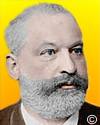
On 26 Dec 1838, Clemens Alexander Winkler was born, a German chemist who, in 1886, discovered a new element in the mineral argyodite. The chemical processing involved was long and tedious, which makes an interesting read in an excerpt from The Discovery of the Elements by Mary Elvira Weeks. More than just being in the right place at the right time to find out about the interesting mineral, he had the skill and knowledge to pursue the isolation of this new element. One day, reckless with discouragement he... Well, that would be telling! Read for yourself what was the turning point in his efforts.

On 26 Dec 1791, Charles Babbage was born, an English mathematician who pioneered mechanical computation. Though he was utlimately frustrated in his search for sufficient funding, he made some progress towards building an enormous machine capable of results with greater integrity than calculations by humans. Today's book pick is: The Difference Engine: Charles Babbage and the Quest to Build the First Computer, by Doron Swade, who led a team that built a working model of a Difference Engine, using contemporary materials, in time for Babbage's 1991 bicentenary.
It is available from Amazon, typically about New from $21.95. Used from $2.00. (As of earlier time of writing - subject to change.)
| no image | A scientist's accomplishments are equal to the integral of his ability integrated over the hours of his effort. |
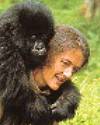 | I have no friends. The more you learn about the dignity of the gorilla, the more you want to avoid people. |
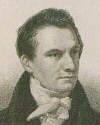 | Forging differs from hoaxing, inasmuch as in the later the deceit is intended to last for a time, and then be discovered, to the ridicule of those who have credited it; whereas the forger is one who, wishing to acquire a reputation for science, records observations which he has never made. |
| Before you look at today's web page, see if you can answer some of these questions about the events that happened on this day. Some of the names are very familiar. Others will likely stump you. Tickle your curiosity with these questions, then check your answers on today's web page. | |
| Births | |
 | Clemens Alexander Winkler, born 26 Dec 1838, was a German chemist who discovered a new element that turned out to be the eka-silicon predicted by Dmitry I. Mendeleyev in 1871. Which element did Winkler discover? |
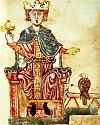 | On 26 Dec 1194, a monarch was born, who made a notable contribution to scientific ornithology was with a six-volume work, De arte venandi cum avibus (c.1244-48). His interest spanned science, especially natural history. He kept a menagerie which at various times had not only monkeys and camels, but also a giraffe and an elephant. Where was Frederick II monarch? |
| Deaths | |
 | Frank Pantridge (1916-2004) was an Irish cardiologist who increased the patient survival rate for those stricken with a heart attack. He equipping ambulances to begin coronary care on reaching the casualty, rather than waiting until transported to a hospital. What was his key invention? |
| Events | |
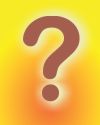 | On 26 Dec 1982, The Man of the Year cover on Time magazine showed a non-human for the first time. It nominated 1982's “greatest influence for good or evil.” What was on the 1982 Time 1982 “Man of the Year” cover? |
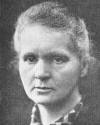 | On 26 Dec 1898, Polish-French scientist Marie Sklodowska Curie discovered a new radioactive element while experimenting with pitchblende, a common uranium ore. She had observed that this ore was more radioactive than refined uranium. This indicated that there must be another element, even more radioactive than uranium, mixed in with this ore. Which element was this? |
Fast answers for the previous newsletter for December 25: electron microscope • sulphur • Clara Barton • Positively charged particles emitted from the backside of holes in a perforated cathode used in a gas discharge tube • wine-bottle opener • decade including the year 1801.
 If you enjoy this newsletter, the website, or wish to offer encouragement or ideas, please send feedback by using your mail reader Reply button.
If you enjoy this newsletter, the website, or wish to offer encouragement or ideas, please send feedback by using your mail reader Reply button. Your click on a Facebook, StumbleUpon, or other social button on the site webpages is also a welcome sign of appreciation. Thank you for using them.
© This newsletter is copyright 2019 by todayinsci.com. Please respect the Webmaster's wishes and do not put copies online of the Newsletter — or any Today in Science History webpage. (If you already have done so, please remove them. Thank you.) Offline use in education is encouraged such as a printout on a bulletin board, or projected for classroom viewing. Online, descriptive links to our pages are welcomed, as these will provide a reader with the most recent revisions, additions and/or corrections of a webpage. For any other copyright questions, please contact the Webmaster by using your mail reader Reply button.
--
If you do not want to receive any more newsletters, Unsubscribe
To update your preferences and to unsubscribe visit this link
Executive Real Estate Business Class
-
"It was like a man with wings. It wasn't like anything you'd see on TV or in a monster movie." ...
About the publisher
Search This Blog
Blog Archive
-
▼
2020
(1542)
-
▼
December
(121)
- On This Day for December 31 - Ottawa made capital ...
- Newsletter for Thursday 31 December.
- December 31: The Battle of Quebec, a Rainy Day in ...
- All That's Interesting's 10 Most Popular Stories O...
- On This Day for December 30 - Union of Soviet Soci...
- Newsletter for Wednesday 30 December.
- December 30: Creation of the USSR, the All India M...
- Know Better in 2021
- On This Day for December 29 - U.S. annexation of T...
- Newsletter for Tuesday 29 December.
- December 29: On This Day in History
- The Best of HISTORY This Week
- The 10 Best History Uncovered Articles Of 2020
- On This Day for December 28 - Westminster Abbey op...
- Newsletter for Monday 28 December.
- December 28: Galileo Observes Neptune, Harriet Tub...
- The death of Thomas Becket | The history of New Year
- On This Day for December 27 - Dutch transfer of In...
- Newsletter for Sunday 27 December.
- December 27: On This Day in History
- On This Day for December 26 - Indian Ocean tsunami...
- Newsletter for Saturday 26 December.
- December 26: 1st Spanish Settlement in the New Wor...
- The Anti-Santa Who Takes Naughty Kids To Hell, The...
- On This Day for December 25 - Christmas celebrated...
- Newsletter for Friday 25 December.
- December 25: Andrew Johnson's Christmas Pardon, Ce...
- On This Day for December 24 - Treaty of Ghent, Joh...
- Newsletter for Thursday 24 December.
- December 24: The Treaty of Ghent, Author Stephenie...
- Demystified Video: Why Is Christmas in December?
- On This Day for December 23 - Aleksander Kwaśniews...
- December 23: Van Gogh's Madness, the Partition of ...
- On This Day for December 22 - Alfred Dreyfus sente...
- Newsletter for Tuesday 22 December.
- December 22: An Impenetrable Fortress Falls, the 1...
- On This Day for December 21 - Radium discovered by...
- December 21: The Soviet Union Ends, Life in the Tr...
- A history of Christmas – from Oliver Cromwell to V...
- On This Day for December 20 - Macau made an admini...
- Newsletter for Sunday 20 December.
- December 20: US Buys Louisiana, the Viet Cong and ...
- On This Day for December 19 - Articles of impeachm...
- Newsletter for Saturday 19 December.
- December 19: On This Day in History
- The Soviet Executioner Who Killed 7,000 Poles One ...
- On This Day for December 18 - Slavery abolished in...
- Newsletter for Friday 18 December.
- December 18: The Yuan Dynasty Begins, Nuclear Powe...
- The perfect gifts for the curious kids in your lives!
- On This Day for December 17 - Flight of the Wright...
- Newsletter for Thursday 17 December.
- December 17: Tamerlane Sacks Delhi, the Wright Bro...
- Demystified: Do We Really Use Only 10 Percent of O...
- On This Day for December 16 - Boston Tea Party, Ja...
- Newsletter for Wednesday 16 December.
- December 16: A Boston Tea Party, the Battle of the...
- Haunting Kennedy Assassination Photos That Most Pe...
- On This Day for December 15 - Premiere of Gone wit...
- Newsletter for Tuesday 15 December.
- December 15: Vandals, Mongols and the US Bill of R...
- On This Day for December 14 - Roald Amundsen's arr...
- Newsletter for Monday 14 December.
- December 14: Amundsen and Scott's Epic Race to the...
- On This Day for December 13 - New Zealand sighted,...
- Newsletter for Sunday 13 December.
- On This Day for December 12 - U.S. Supreme Court d...
- December 12: A Generous Manhattan Gift, Bush v. Go...
- How eels powered the medieval economy | The histor...
- 55 Of History's Creepiest Pictures And Their Distu...
- On This Day for December 11 - Abdication of King E...
- Newsletter for Friday 11 December.
- December 11: The Mayflower Pilgrims, an Abdication...
- UPDATED: Britannica Year in Review: Story of the Year
- Britannica Year in Review: Story of the Year
- On This Day for December 10 - Encyclopædia Britann...
- Newsletter for Thursday 10 December.
- December 10: Spanish-American War, Edward VIII and...
- Laurence Fishburne Hosts a New HISTORY Digital Series
- Demystified: What's the Difference Between Whiskey...
- On This Day for December 9 - Lech Wałęsa elected p...
- Newsletter for Wednesday 9 December.
- December 9: Belisarius Enters Rome, Lech Wałęsa El...
- What will you discover this Thursday?
- On This Day for December 8 - John Lennon fatally s...
- Newsletter for Tuesday 8 December.
- December 8: Lincoln's Amnesty Proclamation, the US...
- On This Day for December 7 - Pearl Harbor attack, ...
- Newsletter for Monday 7 December.
- December 7: Birth of Plastics, Infamy in Pearl Har...
- History books of the year | Historical board games...
- On This Day for December 6 - Irish Free State esta...
- Newsletter for Sunday 6 December.
- December 6: Mongols Destroy Kiev, Slavery Abolishe...
- On This Day for December 5 - Witchcraft condemned ...
- Newsletter for Saturday 5 December.
- December 5: Gold Rush in California, End of Prohib...
- HNN Newsletter: You are now unsubscribed
- 10 Medieval Execution Methods That Are The Definit...
- On This Day for December 4 - Ivan the Terrible pro...
-
▼
December
(121)
-
Blogroll
-
About
HistoryFact










0 comments:
Post a Comment